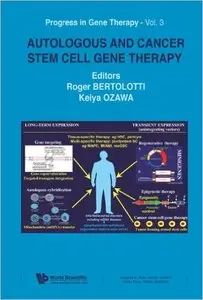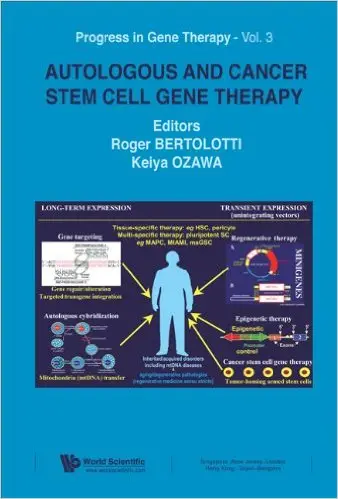Autologous And Cancer Stem Cell Gene Therapy (Progress in Gene Therapy) by Keiya Ozawa
English | Dec. 13, 2007 | ISBN: 9812775862 | 489 Pages | PDF | 15 MB
English | Dec. 13, 2007 | ISBN: 9812775862 | 489 Pages | PDF | 15 MB
Stem cells provide for life-long cell replacement in tissues and organs, and have inherent homing abilities that are critical in therapeutic applications. Stem cells are also the driving force of cancer where genetic/epigenetic alterations culminate in tumorigenesis either in tissue stem cells or in some of their derivatives. As a rare subset of the tumor, cancer stem cells are the only drive of tumor initiation/propagation. Autologous and cancer stem cells are thus the key targets of 1) long-term and transient-regenerative/epigenetic gene therapy and 2) of recurrence-free anticancer therapy, respectively. While cancer stem cell gene therapy still needs time to accomplish, autologous stem cells have been instrumental in the first unequivocal successes for gene therapy whereby ex vivo retrovirally corrected hematopoietic stem cells have been returned to the patients.
This timely book presents 1) the aforementioned stem cell gene therapy achievements that rely on random-integration of therapeutic transgenes into host chromosomes and 2) emerging experimental approaches aimed at eliminating random-integration oncogenic hazards through site-specific integration or gene targeting. Breakthrough endonuclease-boosted gene targeting for gene correction (inherited diseases) or targeted integration of therapeutic transgenes (other disorders) culminating in an efficiency compatible with clinical trials is one of the highlights of the book. Highlights also include the pioneering transplantation of adult pluripotent stem cells as a substitute for tissue-specific stem cells, thereby pinpointing the invaluable potential for stem cell gene therapy applications of autologous cells able to contribute to all three germ layers. Stem cell gene therapy is thus discussed in terms of 1) magnifying stem cell therapeutic homing through transient regenerative gene therapy and 2) of tackling most pathologies (including mitochondrial DNA diseases and ageing disorders) through stem cell repopulation dynamics into appropriate niches (long-term engraftment) and tissues (cell turn-over). Regarding cancer stem cell gene therapy, focus is on both the increasing number of identified tissue-specific cancer stem cells as the ultimate therapeutic targets and on the development of armed stem cells as tumor-homing vectors for targeted anticancer therapy.
Contents: Introduction: Toward a Universal Platform for Autologous Stem Cell Gene Therapy; Long-term Stem Cell Gene Therapy: From Current Clinical Random-Integration Achievements to Stem Cell Gene Targeting/Cybridization: From Pioneering Clinical Retroviral Gene Therapy to Experimental Site-Specific Integrative Gene Therapy; Stem Cell Gene Targeting/Cybridization: Toward Endonuclease-Boosted Gene Repair/Alteration, Custom Site-Specific Integrative Gene Therapy and Transmitochondrial Therapy/Rejuvenation; Adult Pluripotent Stem Cells: Emerging Stem Cell/Gene Therapy Breakthrough; Cancer Stem Cell Gene Therapy: Cancer Stem Cells as Breakthrough Targets of Cancer Gene Therapy; Armed Stem Cells as Tumor-Homing Vectors for Cancer Gene Therapy.



